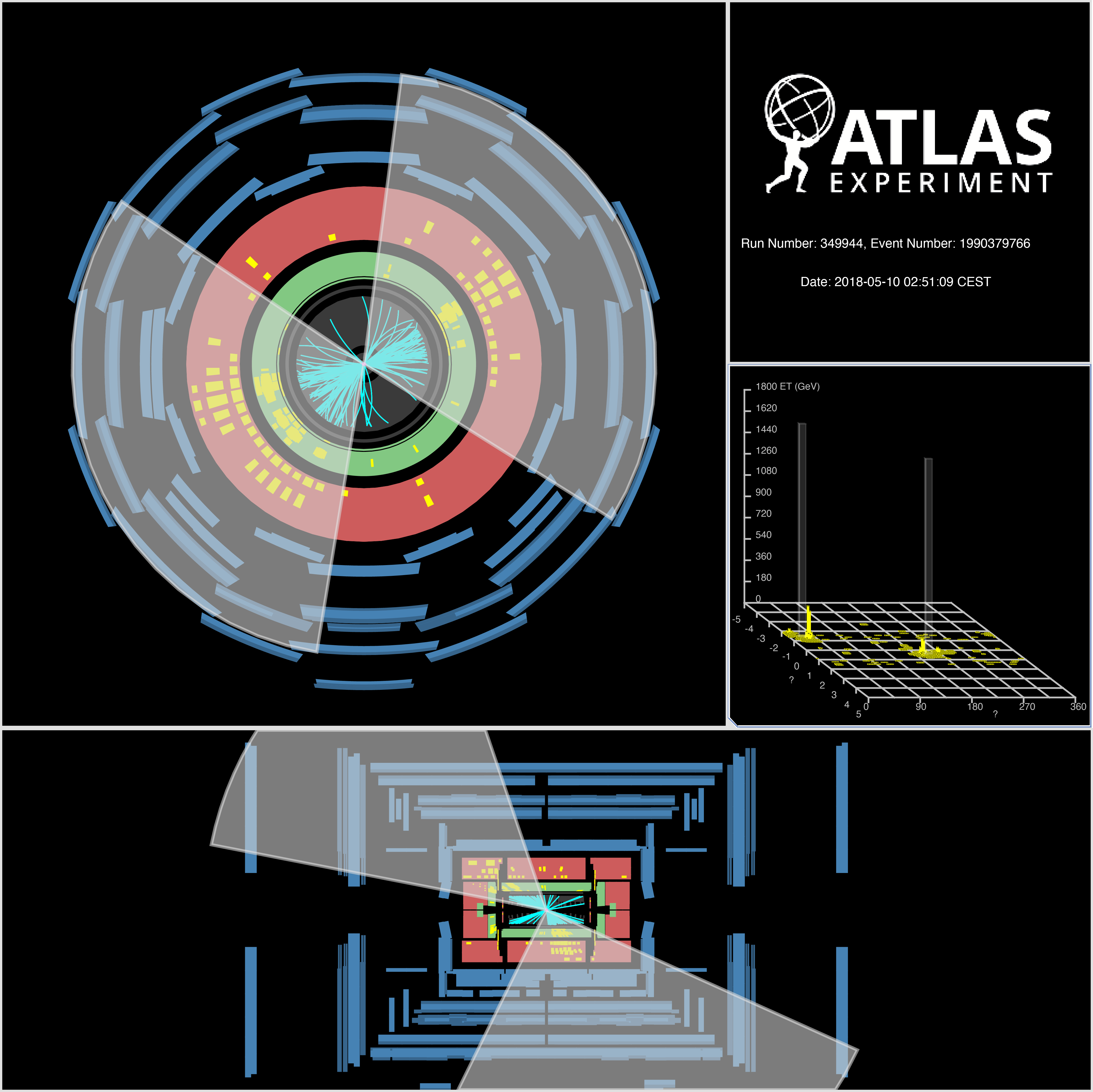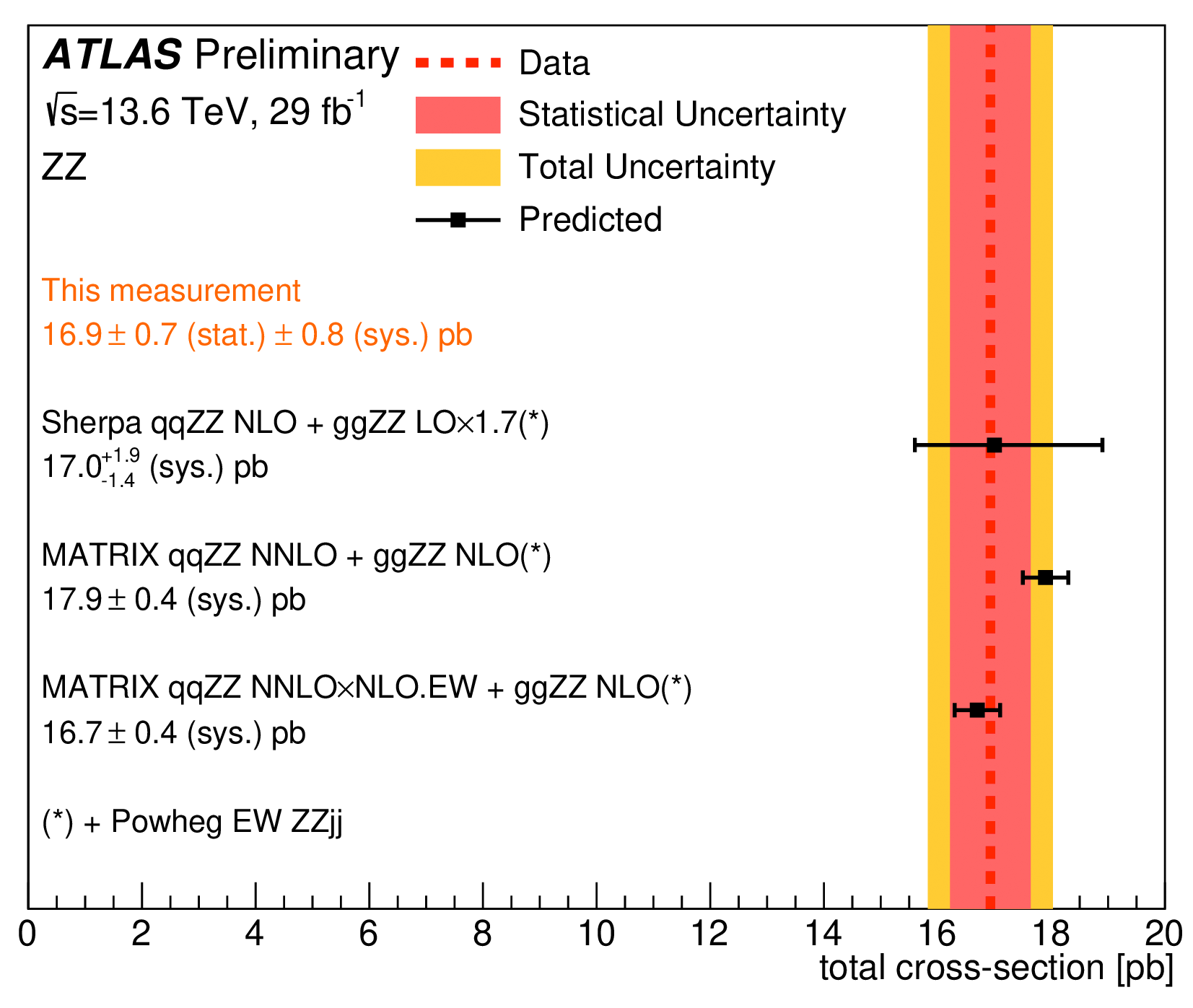ATLAS releases comprehensive review of supersymmetric dark matter
22 August 2023 | By

If new particles are out there, the Large Hadron Collider is the ideal place to search for them! The theory of Supersymmetry proposes the existence of a whole new family of partner particles for each of the known fundamental particles. While this might seem extravagant, these partner particles could elegantly address various holes in current scientific knowledge – such as the source of mysterious dark matter, the “unnaturally” low mass of the observed Higgs boson, the anomalous way that the muon spins, and even the relationship between the various forces of nature.

But if these supersymmetric particles exist, where might they be hiding?
Physicists analysing data from the ATLAS experiment have been trying to find out. The increased energy and the larger collision rate provided by Run 2 of the LHC (2015-2018) allowed them to search for some of the most elusive types of supersymmetric particles – those that would be produced only rarely through the “weak” nuclear force or the electromagnetic force. The lightest of these weakly-interacting supersymmetric particles could be the source of the dark matter.
In new results presented today, the ATLAS Collaboration provides its most comprehensive overview of the searches for weakly-interacting supersymmetric particles. By developing new search algorithms and exploiting machine learning techniques, researchers have probed deep into this difficult-to-reach territory.
The ATLAS Collaboration has set stringent constraints on supersymmetric dark-matter particles. If these particles exist, they don't have many places left to hide.
Physicists pulled together constraints from eight different ATLAS papers, each seeking evidence for supersymmetric particles in a different way. The combined power and sensitivity of the different search strategies allowed researchers to study tens of thousands of different supersymmetric models, each with different predictions about the masses of the new supersymmetric particles.

These ATLAS searches have unprecedented sensitivity, and can explore a wide range of possible supersymmetric-particle masses (see Figure 1). ATLAS physicists looked for evidence of “lab-made” dark matter – that is, dark matter created in LHC collisions. Their searches are found to be very complementary to other experiments that are seeking natural, “relic” dark matter left over from the Big Bang (see Figure 2). Unlike collider searches, which don’t need to see the dark matter to infer its presence, the latter experiments rely on the dark-matter particles having a sufficiently large probability to hit normal materials and so to be detected.
One of the most consequential findings is that some previously-favoured regions for masses – where the dark-matter particle has about half the mass of the Z boson or the Higgs boson – have been almost totally excluded (see Figure 3). While possible hiding-places are being systematically reduced, plenty of models remain stubbornly evasive. Improving the sensitivity of ATLAS searches to these models will require more collision data and further clever developments in search strategy.
Learn more
- ATLAS Run 2 searches for electroweak production of supersymmetric particles interpreted within the pMSSM (ATLAS-CONF-2023-055)
- EPS-HEP 23 Plenary by Pamela Ferrari: Highlights from ATLAS
- Devouring dark matter theories, ATLAS Physics Briefing, August 2015



